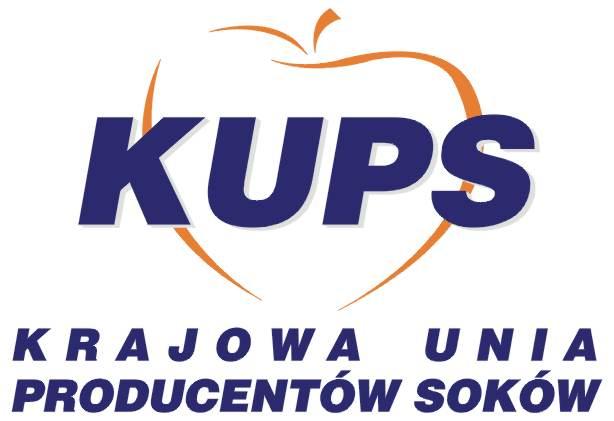ECONOMY
- 2 Brexit: The Agreement Between the EU and The UK Allows to Avoid Chaos in Poland’s Agri-Food Trade with the UK – Łukasz Ambroziak (DOI 10.15199/65.2021.5.1)
The aim of the article is to describe selected elements of the Trade and Cooperation Agreement between the EU and the United Kingdom (TCA) and the impact of Brexit on current Polish agri-food trade with the UK. The TCA Agreement, agreed just a few days before the end of the transitional period (the end of 2020), allowed Poland to avoid a paralysis in trade with the UK. However, it was not without a clear breakdown in mutual trade, in particular in imports from the UK. Although the TCA agreement provides for duty-free trade in goods (subject to compliance with the rules of origin), border controls have returned, including the compliance with sanitary and phytosanitary standards, which entails the obligation to prepare appropriate documentation. In the long term, the UK will lose its importance as a market for Polish agri-food products. The scale of this decline will depend on how quickly Polish enterprises adapt to the new conditions. And this will be visible after some month of the functioning of the UK outside the EU.
KEY WORDS: brexit, agri-food trade, Poland, the United Kingdom
- 8 The Growth of Agtech and Foodtech Startups: Characteristics, Business Models, Funding – Katarzyna Kosior (DOI 10.15199/65.2021.5.2)
The food and beverage industry – along with robotics, artificial intelligence, transport and biotechnology – is listed among sectors with the highest growth potential in terms of start-up funding and investment deals. According to estimates, in 2020 agtech and foodtech start-ups obtained a total of over USD 26.1 billion from Venture Capital and Private Equity funds, 15.5% more than in 2019. This significant increase in interest in developing innovative products and services in the food supply chain has been to a large extent influenced by the COVID-19 pandemic. Startups from e-grocery sector, start-ups offering meal deliveries and start-ups producing alternatives to animal-based foods have experienced particularly dynamic growth. The problem that should be noted however is that there has been an increased concentration of investment in few locations – the largest funding rounds go to start-ups located mainly in the United States and in Asian countries. Although the products, services and business models of European agri-food start-ups seem equally innovative, they receive significantly less funding to test their ideas and also less late-stage capital for further development.
TECHNICS– TECHNOLOGY
- 16 A Comparison Between Beet Leaven Produced on A Traditional Way and The Method Using Starter Cultures of Bacteria – Artur Kiełb, Martyna Walczuk, Wiktoria Wilkowska, Weronika Zduńczyk, Dorota Zielińska (DOI 10.15199/65.2021.5.3)
The aim of the study was to comparison between beet leaven, formed by spontaneous fermentation with fermented beet juice produced by using probiotic starter cultures of bacteria (Lactobacillus rhamnosus GG, Lactobacillus acidophilus LA5, Lactobacillus fermentum S21). The highest number of bacteria was observed in samples of fermented juice made with the use of S21 and LGG strains. In the conducteThe aim of the study was to comparison between beet leaven, formed by spontaneous fermentation with fermented beet juice produced by using probiotic starter cultures of bacteria (Lactobacillus rhamnosus GG, Lactobacillus acidophilus LA5, Lactobacillus fermentum S21). The highest number of bacteria was observed in samples of fermented juice made with the use of S21 and LGG strains. In the conducte
KEY WORDS: beet, juice, leaven, probiotics
- 20 Fermented Vegetables and Fruits – Janusz Czapski (DOI 10.15199/65.2021.5.4)
Lactic acid fermentation is one of the oldest methods of preserving various raw materials, including vegetables and fruits. Consumers associate fermented pickles with naturalness and beneficial to their health. The article describes the basics of natural fermented pickles manufacture, their nutritional value and safety. The development of pickle production requires alot of research, including development of starter cultures, comprehensive research on the nutritional functions and safety. The use of more types of vegetables and inclusion including fruits in the production of pickles is a way to increase the consumption of various compounds with beneficial effects for consumers. The manufacture of such products is possible by small-scale producers. Fermented juices can be an important supplement to our diet.
KEY WORDS: vegetables, fruits, lactic acid fermentation, quality
FOOD-FEEDING
- 25 Turmeric (Curcuma Longa L.) – Source of Curcumin, Use in The Food Industry and Medicine – Jagoda Kępińska-Pacelik, Wioletta Biel(DOI 10.15199/65.2021.5.5)
For centuries, man has been using plant products not only for culinary but also for medicinal purposes. Turmeric (long) belongs to the ginger family and is grown extensively in Asia. China is an important producer, but India is the world power in its cultivation. It is a plant used spice and as a food dye, and also in medicine. Curcuminoids are the biologically active factors that give turmeric its extraordinary properties and color. It is a group of substances that include curcumin, demethoxycurcumin and bis-demethoxycurcumin. Curcumin is used as a yellow-orange food coloring. It can be used as an independent additive to dishes or as an ingredient in spice mixtures, e.g. curry. The most important pro-health effects observed after the use of curcuminoids are anti-inflammatory, anti-cancer and antioxidant effects. According to current research, compounds in turmeric may protect the body against SARS-CoV-2 infection
KEY WORDS: dyes, curcumin, turmeric, pro-health properties
- 29 Canihua And Quinoa – The Comparison of Health-Promoting Properties of Gluten-Free Pseudocereals – Sylwia Sady, Maria Sielicka-Różyńska (DOI 10.15199/65.2021.5.6)
Among pseudo-cereals, i.e. agroup of plants that are not cereal grains, but resemble them in appearance, chemical composition and similar industrial applications, canihua and quinoa occupy a special place. The article compares selected health-promoting properties of grains of one variety of canihua and three varieties of quinoa. The grains exhibited high antioxidant capacity and a significant amount of phenolic compounds, quinoa canihua showed twofold higher antiradical and reducing activity. Canihua and quinoa grains are a valuable source of oils with a favourable fatty acid composition, as they contain 53.5-63.1% of polyunsaturated fatty acids. Canihua, in comparison to quinoa, has a significantly higher content of calcium and micronutrients such as iron, manganese, zinc and copper. There was no significant effect of quinoa varieties on the health-promoting propertiesKEY WORDS: pseudocereals, canihua, quinoa, antioxidant activity, gluten-free
LOGISTIC-PACKAGING
- 34 Contemporary Solutions and Trends in Meat Packaging and Meat Products – Halina Makała (DOI 10.15199/65.2021.5.7)
Meat and meat products require packaging that meets the highest quality standards. They allow to ensure the safety of both meat and processed meat, as well as convenience and functional ity of use by the consumer. The vast majority of packaging intended for packing meat and meat products is made of synthetic materials, in the form of foil, trays, bags and containers that come into direct contact with the raw material or finished product. Active and intelligent packaging is the direction of the development of food packaging in Poland, including for meat and meat products. This eventuality will be influenced by the constantly improved production technology as well as the growing awareness of consumers and the formation of new shopping habits.
KEY WORDS: packaging, meat and meat products, active and intelligent packaging




